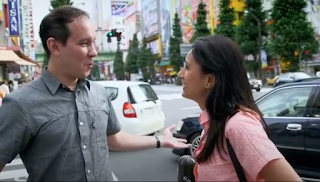Me on Monkey in Daily Yomiuri


SOFT POWER HARD TRUTHS / Fantasy, art--and the real Japan
For several years, I have been trying to marry my two chief interests in Japan's contemporary culture--its popular arts, represented by anime, manga, fashion and design, and its literary voices: fiction writers and poets whose visions of a surreal 21st century Japan use postmodern conceits with a preternatural calm, as if skies full of falling frogs (Haruki Murakami) and swimmers with suddenly detached limbs (Yoko Ogawa) were perfectly commonplace in today's Nippon. In my book, Japanamerica, and in my lectures, I incorporate comments from Murakami and woodblock prints by Katsushika Hokusai alongside stories about Osamu Tezuka and Hayao Miyazaki, with splashes of Pokemon, Naruto and Hello Kitty. If I'm successful, the integration feels organic. If not, I feel like a hustler.
But last week, I had the good fortune to participate in an evening that gracefully wedded both. Amid a series of events in New York City to launch Monkey Business: New Voices from Japan, the first English-language edition of a Japanese literary magazine by University of Tokyo scholar and literary translator Motoyuki Shibata and York University scholar and translator Ted Goossen, I shared the stage with Shibata, American novelist Steve Erickson and Japanese novelist Hideo Furukawa to talk about storytelling. [Full disclosure: I am invovled in the publication as a curator and contributing editor.] We focused on the visual elements of all narratives--fiction, manga, film, woodblock prints and scroll painting. Miraculously, it all made sense.
The English edition of Monkey Business contains a manga created by a sibling team of artists called the Brother and Sister Nishioka and based on Franz Kafka's story, "The Country Doctor."
It also includes Furukawa's spastically apocalyptic short story, "Monsters," in which the eponymous creatures have overtaken Tokyo's most famous neighborhoods, Ginza and Shibuya, and express deep longing and exasperation about what the humans have left behind. And Furukawa's conversation with Murakami is the centerpiece of a thrilling manuscript.
With all the news from Japan about ongoing aftershocks, the nuclear threat in Fukushima, and rising casualties in Tohoku, the opportunity to bring together manga, anime and literature in a peaceful setting was an inspiring gift.
By sheer coincidence, I've been in the United States since the Tohoku quake and tsunami hit, having flown out of Tokyo 24 hrs. before ... [more here; and at 3AM]

.jpg)
